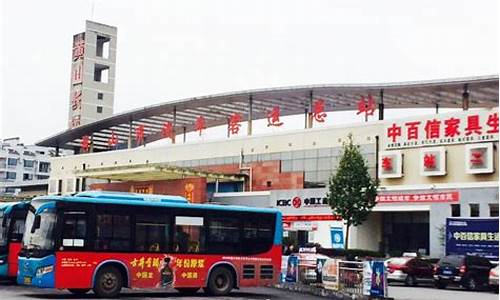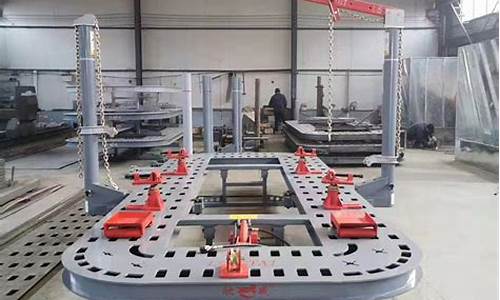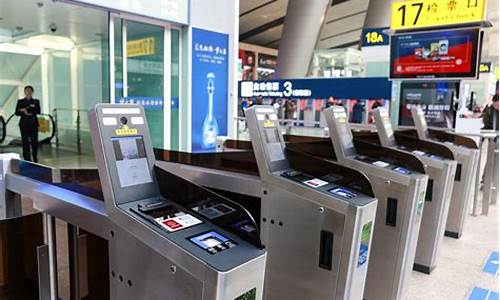汽车制动系统外文翻译_汽车制动原理翻译成英文
1.汽车常用术语有那些?给好解释!
2.求制动系统的英文翻译
3.ABS+EBD它的作用是什么?
4.汽车各个档位翻译成英文
5.哪位高人给我用英文翻译一下
汽车常用术语有那些?给好解释!

随着电控技术的普及,现代汽车越来越多的采用了很多新技术,与老化油器汽车相比,大家很可能会觉得有一点陌生,在这里,我向大家介绍几种常见的汽车方面的术语.
1.ABS: “ABS”是英文“Anti-lockBreakSystem”的缩写,中文译为“防死锁刹车系统”。它是一种具有防滑、防锁死等优点的安全刹车控制系统。没有安装ABS系统的车,在遇到紧急情况时,来不及分步缓刹,只能一脚踩死。这时车轮容易抱死,加之车辆冲刺惯性,便可能发生侧滑、跑偏、方向不受控制等危险状况。而装有ABS的车,当车轮即将到达下一个锁死点时,刹车在一秒内可作用60至120次,相当于不停地刹车、放松,即相似于机械的“点刹”。因此,可以避免在紧急刹车时方向失控及车轮侧滑,使车轮在刹车时不被锁死,轮胎不在一个点上与地面摩擦,加大了摩擦力,使刹车效率达到90%以上。 一般说,在制动力缓缓施加的情况下,ABS多不作用,只有在制动力猛然增加使车轮转速骤消的时候ABS才发生效力。ABS的另一主要功效是制动的同时打方向躲避障。因此,在制动距离较短,无法避免触障时,迅速制动转向,是避免事故的最佳选择。值得注意的是,汽车装有ABS,并不代表就一切万事大吉了。所以在此奉劝装有ABS系统的车主,万不可放心大胆地超能力驾驶,引发事故,也许ABS也救不了你。
2.OBD: OBD是英文On-Board Diagnostics的缩写,中文翻译为“车载自动诊断系统”。这个系统将从发动机的运行状况随时监控汽车是否尾气超标,一旦超标,会马上发出警示。当系统出现故障时,故障(MIL)灯或检查发动机(Check Engine)警告灯亮,同时动力总成控制模块(PCM)将故障信息存入存储器,通过一定的程序可以将故障码从PCM中读出。根据故障码的提示,维修人员能迅速准确地确定故障的性质和部位。 从20世纪80年代起,美、日、欧等各大汽车制造企业开始在其生产的电喷汽车上配备OBD,初期的OBD没有自检功能。比OBD更先进的OBD-Ⅱ在20世纪90年代中期产生,美国汽车工程师协会(SAE)制定了一套标准规范,要求各汽车制造企业按照OBD-Ⅱ的标准提供统一的诊断模式,在20世纪90年末期,进入北美市场的汽车都按照新标准设置OBD。OBD-Ⅱ与以前的所有车载自诊断系统不同之处在于有严格的排放针对性,其实质性能就是监测汽车排放。当汽车排放的一氧化碳(CO)、碳氢化合物(HC)、氮氧化合物(NOx)或燃油蒸发污染量超过设定的标准,故障灯就会点亮报警。虽然OBD-Ⅱ对监测汽车排放十分有效,但驾驶员接受不接受警告全凭“自觉”。为此,比OBD-Ⅱ更先进的OBD-Ⅲ产生了。 OBD-Ⅲ主要目的是使汽车的检测、维护和管理合为一体,以满足环境保护的要求。OBD-Ⅲ系统会分别进入发动机、变速箱、ABS等系统ECU(电脑)中去读取故障码和其它相关数据,并利用小型车载通讯系统,例如GPS导航系统或无线通信方式将车辆的身份代码、故障码及所在位置等信息自动通告管理部门,管理部门根据该车辆排放问题的等级对其发出指令,包括去哪里维修的建议,解决排放问题的时限等,还可对超出时限的违规者的车辆发出禁行指令。因此,OBD-Ⅲ系统不仅能对车辆排放问题向驾驶者发出警告,而且还能对违规者进行惩罚。 据了解,国内合资汽车厂近年来引进的一些车型在欧洲也有生产销售,它们本身就配备有OBD并达到了欧III甚至欧IV标准,国产后往往会减去或关闭OBD,一方面是节约成本,也为了避免在油品质量不达标的情况下因OBD报警而引发麻烦。而北京在实行欧Ⅲ标准后,将要求汽车增加OBD装备。据称欧Ⅲ标准在北京执行的第一年厂家可以不加装OBD,但从第二年开始将做此项要求。
3.ASR: ASR是驱动防滑系统的简称,其作用是防止汽车起步、加速过程中驱动轮打滑,特别是防止汽车在非对称路面或转弯时驱动轮空转,并将滑移率控制在10%—20%范围内。由于ASR多是通过调节驱动轮的驱动力实现控制的,因而又叫驱动力控制系统,简称TCS,在日本等地还称之为TRC或TRAC。ASR和ABS的工作原理方面有许多共同之处,因而常将两者组合在一起使用,构成具有制动防抱死和驱动轮防滑转控制(ABS/ASR)系统。该系统主要由轮速传感器、ABS/ASR ECU、ABS执行器、ASR执行器、副节气门控制步进电机和主、副节气门位置传感器等组成。在汽车起步、加速及运行过程中,ECU根据轮速传感器输入的信号,判定驱动轮的滑移率超过门限值时,就进入防滑转过程:首先ECU通过副节气门步进电机使副节气门开度减小,以减少进气量,使发动机输出转矩减小。ECU判定需要对驱动轮进行制动介入时,会将信号传送到ASR执行器,独立地对驱动轮(一般是后轮)进行控制,以防止驱动轮滑转,并使驱动轮的滑移率保持在规定范围内
4.ECU: ECU是汽车上的计算机控制系统,燃油经济性、ABS启动的及时性、车上所有电器系统的控制都由ECU实现,在现代汽车中,ECU的先进性,一定程度上标志着产品的年代差别。造型新很重要,但ECU的新旧是本质的区别。比如,发动机燃烧的原理都一样,有的发动机省油,有的就费油,这种区别很大程度上决定于ECU。
5.涡轮增压(Turbo): 涡轮增压简称Turbo,如果在轿车尾部看到Turbo或者T,即表明该车采用的发动机是涡轮增压发动机。涡轮增压器实际上是尸种空气压缩机,通过压缩空气来增加进气量。它是利用发动机排出的废气惯性冲力来推动涡轮室内的涡轮,涡轮又带动同轴的叶轮,叶轮压送由空气滤清器管道送来的空气,使之增压进入气缸。当发动机转速增快,废气排出速度与祸轮转速也同步增快,叶轮就压缩更多的空气进入气缸,空气的压力和密度增大可以燃烧更多的燃料,相应增加燃料量就可以增加发动机的输出功率。涡轮增压器的最大优点是能在不加大发动机排量就能较大幅度地提高发动机的功率及扭力,一般而言,加装增压器后的发动机的功率及扭矩要增大20%—30%。涡轮增压器的缺点是滞后,即由于叶轮的惯性作用对油门骤时变化反应迟缓,使发动机延迟增加或减少输出功率,这对于要突然加速或超车的汽车而言,瞬间会有点提不上劲的感觉。
6.多点电喷: 汽车发动机的电喷装置一般是由喷油油路、传感器组和电子控制单元三大部分组成的。如果喷射器安装在原来化油器位置上,即整个发动机只有一个汽油喷射点,这就是单点电喷;如果喷射器安装在每个气缸的进气管上,即汽油的喷射是由多个地方(至少每个气缸都有一个喷射点)喷人气缸的,这就是多点电喷。
7.顶置凸轮轴(OHC) 发动机的凸轮轴安装位置有下置、中置、顶置三种形式。轿车发动机由于转速较快,每分钟转速可达5000转以上,为保证进排气效率,都采用进气门和排气门倒挂的形式,即顶置式气门装置,这种装置都适合用凸轮轴的三种安装形式。但是,如果采用下置式或者中置式的凸轮轴,由于气门与凸轮轴的距离较远,需要气门挺杆和挺柱等辅助零件,造成气门传动机件较多,结构复杂,发动机体积大,而且在高速运转下还容易产生噪声,而采用顶置式凸轮轴则可以改变这种现象。所以,现代轿车发动机一般都采用了顶置式凸轮轴,将凸轮轴配置在发动机的上方,缩短了凸轮轴与气门之间的距离,省略了气门的挺杆和挺柱,简化了凸轮轴到气门之间的传动机构,将发动机的结构变得更加紧凑。更重要的是,这种安装方式可以减少整个系统往复运动的质量,提高了传动效率。按凸轮轴数目的多少,可分为单顶置凸轮轴(SOHC)和双顶置凸轮轴(DOHC)两种,由于中高档轿车发动机一般是多气门及V型气缸排列,需采用双凸轮轴分别控制进排气门,因此双顶置凸轮轴被不少名牌发动机所采用。
8.VVT--i VVT—i.系统是丰田公司的智能可变气门正时系统的英文缩写,最新款的丰田轿车的发动机已普遍安装了VVT—i系统。丰田的VVT—i系统可连续调节气门正时,但不能调节气门升程。它的工作原理是:当发动机由低速向高速转换时,电子计算机就自动地将机油压向进气凸轮轴驱动齿轮内的小涡轮,这样,在压力的作用下,小涡轮就相对于齿轮壳旋转一定的角度,从而使凸轮轴在60度的范围内向前或向后旋转,从而改变进气门开启的时刻,达到连续调节气门正时的目的。
9.VTEC VTEC系统全称是可变气门正时和升程电子控制系统,是本田的专有技术,它能随发动机转速、负荷、水温等运行参数的变化,而适当地调整配气正时和气门升程,使发动机在高、低速下均能达到最高效率。+在VTEC系统中,其进气凸轮轴上分别有三个凸轮面,分别顶动摇臂轴上的三个摇臂,当发动机处于低转速或者低负荷时,三个摇臂之间无任何连接,左边和右边的摇臂分别顶动两个进气门,使两者具有不同的正时及升程,以形成挤气作用效果。此时中间的高速摇臂不顶动气门,只是在摇臂轴上做无效的运动。当转速在不断提高时,发动机的各传感器将监测到的负荷、转速、车速以及水温等参数送到电脑中,电脑对这些信息进行分析处理。当达到需要变换为高速模式时,电脑就发出一个信号打开VTEC电磁阀,使压力机油进入摇臂轴内顶动活塞,使三只摇臂连接成一体,使两只气门都按高速模式工作。当发动机转速降低达到气门正时需要再次变换时,电脑再次发出信号,打开VTEC电磁阀压力开头,使压力机油泄出,气门再次回到低速工作模式。
10.混合动力汽车 混合动力汽车就是在纯电动汽车上加装一套内燃机,其目的是减少汽车的污染,提高纯电动汽车的行驶里程。混合动力汽车有串联式和并联式两种结构形式。
11.MPV MPV的全称是Multi-Purpose Vehicle,即多用途汽车。它集轿车、旅行车和厢式货车的功能于一身,车内每个座椅都可调整,并有多种组合的方式,例如可将中排座椅靠背翻下即可变为桌台,前排座椅可作180度旋转等。近年来,MPV趋向于小型化,并出现了所谓的S-MPV,S是小(Small)的意思。S-MPV车长一般在(4.2-4.3)m之间,车身紧凑,一般为(5—7)座。
12.SUV SUV的全称是SportUtility Vehicle,中文意思是运动型多用途汽车。现在主要是指那些设计前卫、造型新颖的四轮驱动越野车。SUV一般前悬架是轿车型的独立悬架,后悬架是非独立悬架,离地间隙较大,在一定程度上既有轿车的舒适性又有越野车的越野性能。由于带有MPV式的座椅多组合功能,使车辆既可载人又可载货,适用范围广。
13.RV RV的全称是Recreati&a Vehicle,.即休闲车,是一种适用于娱乐、休闲、旅行的汽车,首先提出RV汽车概念的国家是日本。RV的覆盖范围比较广泛,没有严格的范畴。从广义上讲,除了轿车和跑车外的轻型乘用车,都可归属于RV。MPV及SUV也同属RV。
14.汽车导航系统 GPS是以全球24颗定位人造卫星做基础,向全球各地全天候地提供三维位置、三维速度等信息的一种无线电导航和定位系统。GPS的定位原理是:用户接收卫星发射的信号,从中获取卫星与用户之间的距离、时钟校正和大气校正等参数,通过数据处理确定用户的位置。现在,民用GPS的定位精度可达10m以内厶GPS具有的特殊功能很早就引起了汽车界人士的关注,当美国在海湾战争后宣布开放一部分GPS的系统后,汽车界立即抓住这一契机,投入资金开发汽车导航系统,对汽车进行定位和导向显示,并迅速投入使用。汽车GPS导航系统由两部分组成:一部分由安装在汽车工的GPS接收机和显示设备组成;另一部分由计算机控制中心组成,两部分通过定位卫星进行联系。计算机控制中心是由机动车管理部门授权和组建的,它负责随时观察辖区内指定监控的汽车的动态和交通情况,因此整个汽车导航系统起码有两大功能:一个是汽车踪迹监控功能,只要将已编码的GPS接收装置安装在汽车上,该汽车无论行驶到任何地方都可以通过计算机控制中心的电子地图上指示出它的所在方位;另一个是驾驶指南功能,车主可以将各个地区的交通线路电子图存储在软盘上,只要在车工接收装置中插入软盘,显示屏上就会立即显示出该车所在地区的位置及目前的交通状态,既可输入要去的目的地,预先编制出最佳行驶路线,又可接受计算机控制中心的指令,选择汽车行驶的路线和方向。
15.电子稳定装置(ESP) 电子稳定装置(Electronic Stablity Program,简称ESP)是由奔驰汽车公司首先应用在它的A级车上的。ESP实际上是一种牵引力控制系统,与其他牵引力控制系统比较,ESP不但控制驱动轮,而且可控制从动轮。如后轮驱动汽车常出现的转向过多情况,此时后轮失控而甩尾,ESP便会刹慢外侧的前轮来稳定车子;在转向过少时,为了校正循迹方向,ESP则会刹慢内后轮,从而校正行驶方向。
16.VSC 这个系统是以ABS为基础发展而成的。系统主要在大侧向加速度,大侧偏角的极限工况下工作,它利用左右两侧制动力之差产生的横摆力偶矩来防止出现难以控制的侧滑现象,如在弯道行驶中因前轴侧滑而失去路径跟踪能力的驶出现象及后轴侧滑甩尾而失去稳定性的激转现象等危险工况。
17.EGR(废气再循环) 发动机控制电脑即ECU根据发动机的转速、负荷(节气门开度)、温度、进气流量、排气温度控制电磁阀适时地打开,进气管真空度经电磁阀进入EGR阀真空膜室,膜片拉杆将EGR阀门打开,排气中的少部分废气经EGR阀进入进气系统,与混合气混合后进入气缸参与燃烧。少部分废气进入气缸参与混合气的燃烧,降低了燃烧时气缸中的温度,因NOX是在高温富氧的条件下生成的,故抑制了NOX的生成,从而降低了废气中的NOX的含量。但是,过度的废气参与再循环,将会影响混合气的着火、性能,从而影响发动机的动力性,特别是在发动机怠速、低速、小负荷及冷机时,再循环的废气会明显地影响发动机性能。所以,当发动机在怠速、低速、小负荷及冷机时,ECU控制废气不参与再循环,避免发动机性能受到影响;当发动机超过一定的转速、负荷及达到一定的温度时,ECU控制少部分废气参与再循环,而且,参与再循环的废气量根据发动机转速、负荷、温度及废气温度的不同而不同,以达到废气中的NOX最低。
18.电子制动力分配系统(EBD) EBD能够根据由于汽车制动时产生轴荷转移的不同,而自动调节前、后轴的制动力分配比例,提高制动效能,并配合ABS提高制动稳定性。汽车在制动时,四只轮胎附着的地面条件往往不一样。比如,有时左前轮和右后轮附着在干燥的水泥地面上,而右前轮和左后轮却附着在水中或泥水中,这种情况会导致在汽车制动时四只轮子与地面的摩擦力不一样,制动时容易造成打滑、倾斜和车辆侧翻事故。EBD用高速计算机在汽车制动的瞬间,分别对四只轮胎附着的不同地面进行感应、计算,得出不同的摩擦力数值,使四只轮胎的制动装置根据不同的情况用不同的方式和力量制动,并在运动中不断高速调整,从而保证车辆的平稳、安全。
19.ABD-自动制动差速器 是制动力系统的一个新产品,它的主要作用是缩短制动距离,和ABS、EBD等配合适用。当紧急制动时,车会向下点头,车的重量前移,而相应的车的后轮所承担的重量就会减少,严重时可以使后轮失去抓地力,这时相当于只有前轮在制动,会造成制动距离过长。而ABD可以有效防止这种情况,它可以通过检测全部车轮的转速发现这一情况,相应的减少后轮制动力,以使其与地面保持有效的摩擦力,同时将前轮制动力加至最大,以达到缩短制动距离的目的。ABD与ABS的区别在于,ABS是保证在紧急制动时车轮不被抱死,以达到安全操控的目的的,并不能有效的缩短制动距离。而ABD则是通过EBD在保证车辆不发生侧滑的情况下,允许将制动力加至最大,以有效的缩短制动距离.
20.ASR-加速防滑系统 Acceleration Slip Regulation,防止车辆尤其是大马力车在起步、再加速时驱动轮打滑现象,以维持车辆行驶方向的稳定性。ASR与ABS的区别在于,ABS是防止车轮在制动时被抱死而产生侧滑,而ASR则是防止汽车在加速时因驱动轮打滑而产生的侧滑,ASR是在ABS的基础上的扩充,两者相辅相成。
21.牵引力控制系统(TCS) TCS又称循迹控制系统。汽车在光滑路面制动时,车轮会打滑,甚至使方向失控。同样,汽车在起步或急加速时,驱动轮也有可能打滑,在冰雪等光滑路面上还会使方向失控而出危险。TCS就是针对此问题而设计的。TCS依靠电子传感器探测到从动轮速度低于驱动轮时(这是打滑的特征),就会发出一个信号,调节点火时间、减小气门开度、减小油门、降挡或制动车轮,从而使车轮不再打滑。TCS可以提高汽车行驶稳定性,提高加速性,提高爬坡能力。原采只是豪华轿车上才安装TCS,现在许多普通轿车上也有。TCS如果和ABS相互配合使用,将进一步增强汽车的安全性能。TCS和ABS可共用车轴上的轮速传感器,并与行车电脑连接,不断监视各轮转速,当在低速发现打滑时,TCS会立刻通知ABS动作来减低此车轮的打滑。若在高速发现打滑时,TCS立即向行车电脑发出指令,指挥发动机降速或变速器降挡,使打滑车轮不再打滑,防止车辆失控甩尾。
22.安全气囊(SRS) 安全气囊是现代轿车上引人注目的高技术装置。安装了安全气囊装置的轿车方向盘,平常与普通方向盘没有什么区别,但一旦车前端发生了强烈的碰撞,安全气囊就会瞬间从方向盘内“蹦”出来,垫在方向盘与驾驶者之间,防止驾驶者的头部和胸部撞击到方向盘或仪表板等硬物上。安全气囊面世以来,已经挽救了许多人的性命。研究表明,有气囊装置的轿车发生正面撞车,驾驶者的死亡率,大轿车降低了30%,中型轿车降低11%,小型轿车降低14%。安全气囊主要由传感器、微处理器、气体发生器和气囊等部件组成。传感器和微处理器用以判断撞车程度,传递及发送信号;气体发生器根据信号指示产生点火动作,点燃固态燃料并产生气体向气囊充气,使气囊迅速膨胀,气囊容量约在(50-90)L。同时气囊设有安全阀,当充气过量或囊内压力超过一定值时会自动泄放部分气体,避免将乘客挤压受伤。安全气囊所用的气体多是氮气或一氧化碳。除了驾驶员侧有安全气囊外,有些轿车前排也安装了乘客用的安全气囊(即双安全气囊规格),乘客用的与驾车者用的相似,只是气囊的体积要大些,所需的气体也多一些而已。另外,有些轿车还在座位侧面靠门一侧安装了侧面安全气囊。
23.ABC-车身主动控制系统 Active Body Control,ABC系统使汽车对侧倾、俯仰、横摆、跳动和车身高度的控制都能更加迅速、精确。车身的侧倾小,车轮外倾角度变化也小,轮胎就能较好地保持与地面垂直接触,使轮胎对地面的附着力提高,以充分发挥轮胎的驱动制动作用。而ABC的出现克服了悬挂设定舒适性和操控性之间的矛盾,最大限度地接近消费者对车辆在这两方面的要求。
24.排放标准: 汽车排放是指从废气中排出的CO(一氧化碳)、HC+NOx(碳氢化合物和氮氧化物)、PM(微粒,碳烟)等有害气体。从2004年1月1日起,北京将对机动车的尾气排放标准由现在的欧洲I号改为欧洲II号,到2008年,则正式实施欧洲III号标准。
25.制动装置: 是按照需要使汽车减速或在最短的距离内停车,(使汽车)在保证安全的前提下尽量发挥出高速行驶的性能的装置。一般分为鼓式和盘式两种。鼓式制动器的优点是,成本低,防尘,便于同时作为驻车制动器。缺点是尺寸大,质量重,制动热量不易散发出去,制动稳定性不好。盘式制动器:是目前轿车前轮常用的制动器。一般都是钳盘式制动器。盘式制动器与传统的鼓式制动器比较,有以下有点:散热条件好,因此制动稳定性好,抗热衰退性强;尺寸和质量小。
求制动系统的英文翻译
制动系统 Braking Systems
由于字数太多所以就不全部粘贴了。
brake is a device for slowing or stopping the motion of a machine or vehicle, or alternatively a device to restrain it from starting to move again. The kinetic energy lost by the moving part is usually translated to heat by friction. Alternatively, in regenerative braking, much of the energy is recovered and stored in a flywheel, capacitor or turned into alternating current by an alternator, then rectified and stored in a battery for later use.
Note that kinetic energy increases with the square of the velocity (E = 1/2·m·v2 relationship). This means that if the speed of a vehicle doubles, it has four times as much energy. The brakes must therefore dissipate four times as much energy to stop it and consequently the braking distance is four times as long.
Brakes of some description are fitted to most wheeled vehicles, including automobiles of all kinds, trucks, trains, motorcycles, and bicycles. Baggage carts and shopping carts may have them for use on a moving ramp.
Some aeroplanes are fitted with wheel brakes on the undercarriage. Some aircraft also feature air brakes designed to slow them down in flight. Notable examples include gliders and some WWII-era fighter aircraft. These allow the aircraft to maintain a safe speed in a steep descent. The Saab B 17 dive bomber used the deployed undercarriage as an air brake.
Deceleration and avoiding acceleration when going downhill can also be achieved by using a low gear; see engine braking.
Friction brakes on cars store the heat in the rotating part (drum brake or disc brake) during the brake application and release it to the air gradually.
Effects on noise pollution
The action of braking for motor vehicles produces recognizable sound level emissions, varying with the specific tire types and with the roadway surface type produces considerable effect upon sound levels or noise pollution emanating from moving vehicles.[1] There is a considerable range in acoustical intensities produced depending upon the specific tire tread design and the rapidity of deceleration required to slow the vehicle.
[edit] See also
Archaic past tense of break (see brake)
Air brake (aircraft)
Air brake (rail)
Air brake (road vehicle)
Bicycle brake systems
Brake-by-wire (or electromechanical braking)
Brake lining
Brake pad
Brake shoe
Bundy tube
Disc brake
Drum brake
Electromagnetic brake
Electronic Parking Brake
Engine braking
Hand brake
Hydraulic brake
Jake brake also known as J braking
Overrun brake
Parking brake
Railway brake
Regenerative braking
Threshold braking
Trail braking
Vehicle brake
---------
How brakes work
Of all the systems that make up your car, the brake system might just be the most important. In the olden days it was also one of the simplest. Over the years as improvements have been made, the system that has evolved isn't so simple anymore... (It's also about a zillion times more reliable and safer.)
Your brakes work as hard or harder than any other part of the car, however much energy it takes to get your car up a hill, it takes at least as much energy to stop it at the bottom. Think about that for a second. Here, I'll say it again, it takes at least as much energy to get your car safely down a hill and stop it at the bottom, as it took to get your car up the hill in the first place. Your brakes do this by converting the kinetic energy to heat energy. All of this heat is generated between the friction surfaces of your brake pads and your rotors. (I am going to disregard the rear brakes for now, since the front brakes do the lion's share of the work.)
Rather than try to give you a step-by-step procedure for repairing your brakes, I'm going to try to show you how to diagnose a few of the many simple brake problems. Unfortunately, before I can do that, I have to talk about how the brake system works. If you already know how it works, then you probably already know what your problem is, but you might find something useful here anyway or at least I hope so.
Brakes operate on a simple hydraulic principle. (See diagram below) If a force is exerted on the piston putting pressure on the fluid confined in the left hand container, the fluid is forced out through the narrow tube at the bottom and into the right hand container, exerting a force on the second piston, forcing it to move upward.
Now this is how the force from your foot gets to the four corners of the car. If we add a lever to magnify the force applied to the first (master) cylinder, and maybe even a power booster unit to increase that force even more, all we have to do next is figure a way to use that force to slow down the wheels. Since the wheels are attached to the car, slowing them down will slow the car.
If we change the shape of the right hand container, (see below) to make something for the piston to push against, we can make it pinch something. Let's bolt a disc(Brake rotor) to the wheel, so that it rotates whenever the wheel does. We'll mount it in such a way that the edge of it is between the caliper piston and the caliper that we have bolted to the axle of the car.so that when the piston moves out, the disc is pinched between it and the other side of the caliper. Actually we're not quite done. As we have the system now, the disc and the caliper would wear out rather quickly (not to mention making horrible grinding/scraping noises). We need to put something between them to protect the surfaces. Let's call this part "Brake Pads" But wait, as we have drawn it, the piston only pushes on one side of the disc. We have to allow the caliper to slide back and forth if we want it to actually pinch the disc efficiently. Let's make an anchor post and allow the caliper to slide along it. Let's make a nice, strong mount to hold the brake pads, and secure it to the axle. Now all we have to do is mount the caliper assembly to some sturdy part of the car and we're in business.
Brake pads have two main parts, the steel backing, and the actual friction material. The backing is only there to support the friction material, which does the actual work of stopping the car. The friction material does it's job by converting the energy of motion to heat energy. This is done by the magic of friction. The friction between the pad and the disc slows down the disc, and creates heat. This heat is transferred to the pad and the disc and then (at some fixed rate) dissipated to the surrounding air. How fast that heat is radiated is determined by a simple formula, depends on mainly two factors, the temperature of the air around the parts, and the flow of air past them. 99% of the time, this cooling is more than enough to keep the brakes cool enough to work just fine.
OK, now we have our simple brake system. Let's see what can go wrong...
Air in the system This is usually caused by air getting into the brake fluid area, usually from the master cylinder. As the brake pads wear, the caliper pistons ride farther out of the caliper, allowing more fluid to remain in the calipers. Over time this can add up to almost as much fluid as there is in the master cylinder reservoir. If neglected, this will allow the master cylinder to pump some air into the brake lines. Air is very compressable, whereas brake fluid is not, as long as there is a solid stream of brake fluid between the master cylinder piston and the caliper piston, the brake pedal will be nice and firm. If there is air in the system, the pedal will feel spongy and will go down almost all the way to the floor, maybe all the way, depending on how much air is in the system. The standard way of dealing with air in the brake system is to perform an operation called "bleeding the brakes".
Hard brake pedal: Can be caused by bad power booster, (or loss of vacuum to the booster) seized caliper pistons, seized caliper slides, pinched brake lines, and (rarely) problems with the pedal linkage under the dash. The probable best fix is rebuilt calipers,and new pads.
Brake fade: I have seen too much of this, having spent 5 years at the bottom of a 13 km hill with 15% grade and continuous switchbacks. Two phenomena contribute to brake fade, one is the fact that the coefficient of friction of most substances gets lower at high temperatures, and that most liquids will boil at some temperature, and that gases compress, while liquids do not. When you use the brakes to decelerate 3,000 or 4,000 or 7-8-15,000 lbs of vehicle, they get hot. Very hot. Under normal circumstances this would be no big deal, the heat that builts up in the pads, rotors, and calipers will slowly radiate back to the air flowing over them as the car continues down the road. But you aren't going down the road, you are back on the brakes, doing more decelerating for the next switchback. Instead of cooling off, your brakes are getting hotter. And hotter, and hotter. . .As the pads and rotors get hotter the friction material of the pads starts to separate. The binding agent starts to boil off from the surface of the pad, plating out on the rotor as a dark, paintlike film...coefficient of friction approaches zero, pedal gets hard, but no braking action. Your pupils dilate to 10 mm and your body goes into fight-or-flight mode, adrenalin courses through your system. But the car just goes faster.... You shift down, now you are standing on the brake pedal with both feet, around this time, the temperature of the brake fluid in the calipers usually reaches it's boiling point and the pedal just sinks to the floor. Your pupils reach 12 mm, your sphyncters contract to pinpoints, somehow you manage to stop the car. There is smoke coming from behind your front wheels, maybe fire. You put out the fire and have lunch. After things cool off you sit in the car and try the brake pedal, it feels almost normal. Congratulations, you've just experienced, (and survived) brake fade. (You've also just flash-fried your front brakes, figure on new everything to fix it properly.)
Brake squeal: This is a high pitched squealing noise, often heard when you are going slow and are not applying the brakes. If it goes away as you apply the brakes, it could be coming from the brake wear sensors. (Also called 'squealers' by mechanics.) They are small bits of spring steel that are attached to the brake pads in such a way that when the pads are about 75% worn out, the sensors start to rub on the rotors, making the noise. GM invented them, and they are one of the best ideas anyone has ever had in the automotive industry. The sound is so scary that you usually go to a mechanic before any major damage is done to your rotors, and before your braking power is compromised, saving you money and maybe your life.
Grinding noise: Although this is one of the nastiest sounds you will ever hear, it often is the easiest to repair. The first thing you must do is learn what is making the noise. Figure out which wheel it is, then, after safely raising and supporting the car, take off the wheel & tire. Hopefully you will see a simple disc brake system, with a rotor, a caliper, and brake pads. Identify the various components. Gently rotate the brake rotor back and forth until you can identify the source of the noise. Sometimes it is just a small stone, trapped between the brake rotor and the air deflector. The faces of the rotor should be smooth and clean. If you see large scaly rusted places on the friction surfaces of the rotor you should replace them. Most of the time new ones cost less than you would guess. If your pads are worn out(less than 3/16 of an inch of friction material left) and you catch it in time, all you have to do is install new brake pads. If the surface of the rotor is damaged, you will have to resurface or replace it.
Brake pedal pulsation: There are a lot of things that can cause this, from out-of-adjustment wheel bearings to rotors that are bent, brake drums that are out-of-round, rusty spots on the rotors that have a different surface smoothness. To determine whether the pulsation is coming from the front or the rear wheels, check to see if you can feel the pulsation in the steering wheel when the pedal is pulsating. If you can, the problem is coming from the front wheels.
Brake pull: Mostly this one comes from either a caliper piston seized or caliper slides seized. This one is dangerous! If your car tries to turn when you apply the brakes you could veer into oncoming traffic. What often happens with this one is this: the caliper piston on one side starts to seize, the other one now applies first, car veers away from bad part. Driver learns to compensate by steering opposite to the pull every time he brakes. A panic situation comes along, driver nails the brakes, steers away from the expected pull, but because the piston was only partially seized, it works just fine when the brakes are applied with vigor. There is no pull this time. It is easy to lose control of your car in situations like this, if your car pulls to one side or the other when you brake, fix it(or get it fixed) before you hurt somebody. Replace calipers and pads and service the caliper slides.
Brake grag: When you just barely touch the brake pedal and one or more wheels locks up and skids. This one most commonly comes from contaminated friction material on one or more brakes.
Pedal goes to the floor: Gotta be the scariest of them all. If you're lucky, a quick pump on the pedal will get you some braking action. On most newer cars, there will be some braking just before the pedal reaches the floor. Stop driving and check your fluid level. It might just need to be topped up to temporarily get you some braking action to get you home. Regardless, you must find out what caused it and fix it before you drive any further.
Components
Disc brakes have:
brake calipers
brake pads
rotors
caliper mounting hardware
Drum brakes have:
brake backing plates
brake drums
brake shoe self-adjusters
brake shoes
brake springs
wheel cylinders
Both types use:
Brake fluid
Steel brake lines and reinforced rubber brake hoses
Master cylinder
Power brake booster (usually)
proportioning valve
delay valve
metering valve
brake warning light
park brake cables, levers,
ABS+EBD它的作用是什么?
ABS(Anti-lock Brake System)即“防抱死制动系统”,能有效控制车轮保持在转动状态,提高制动时汽车的稳定性及较差路面条件下的汽车制动性能。ABS通过安装在各车轮或传动轴上的转速传感器不断检测各车轮的转速,由计算机算出当时的车轮滑移率,并与理想的滑移率相比较,做出增大或减小制动器制动压力的决定,命令执行机构及时调整制动压力,以保持车轮处于理想制动状态。
EBD的英文全称是Electric Brakeforce Dis-tribution,中文直译就是“电子制动力分配”。汽车制动时,如果四只轮胎附着地面的条件不同,比如,左侧轮附着在湿滑路面,而右侧轮附着于干燥路面,四个轮子与地面的摩擦力不同,在制动时(四个轮子的制动力相同)就容易产生打滑、倾斜和侧翻等现象。
EBD的功能就是在汽车制动的瞬间,高速计算出四个轮胎由于附着不同而导致的摩擦力数值,然后调整制动装置,使其按照设定的程序在运动中高速调整,达到制动力与摩擦力(牵引力)的匹配,以保证车辆的平稳和安全。
当紧急刹车车轮抱死的情况下,EBD在ABS动作之前就已经平衡了每一个轮的有效地面抓地力,可以防止出现甩尾和侧移,并缩短汽车制动距离。
EBD实际上是ABS的辅助功能,它可以改善提高ABS的功效。所以在安全指标上,汽车的性能又多了“ABS+EBD”。
在刹车的时候,车辆四个车轮的刹车卡钳均会作动,以将车辆停下。但由于路面状况会有变异,加上减速时车辆重心的转移,四个车轮与地面间的抓地力将有所不同。传统的刹车系统会平均将刹车总泵的力量分配至四个车轮。从上述可知,这样的分配并不符合刹车力的使用效益。EBD系统便被发明以将刹车力做出最佳的应用。
EBD是Electronic Brake-Force Distribution的缩写,中文全名为电子刹车力分配系统。配置有EBD系统的车辆,会自动侦测各个车轮与地面将的抓地力状况,将刹车系统所产生的力量,适当地分配至四个车轮。在EBD系统的辅助之下,刹车力可以得到最佳的效率,使得刹车距离明显地缩短,并在刹车的时候保持车辆的平稳,提高行车的安全。而EBD系统在弯道之中进行刹车的操作亦具有维持车辆稳定的功能,增加弯道行驶的安全。
汽车各个档位翻译成英文
1、P——Parking,泊车档。当你停车不用时,档位在此,此时车轮处于机械抱死状态,可以防止溜动。?
2、R——Reversegear,倒车档。倒车时用。?
3、N——None,空档。暂时停车时(如红灯),用此档位。注意,此档位表示空档,为防止车辆在斜坡上溜动,一定要踩着刹车。?
4、D——前进档,也称驱动档。不用多说,就是前进时,用此档位。?
5、2——低速档,在上很大的斜坡时,或者在比较倾斜的坡度上启动时,可以用此档起步前进。原理,把档位挂在这里,可以限制汽车的档位自动的只在低档位(相当于手动档汽车的一档和二档)上切换,以保证汽车获得最大前进动力。?
6、L——Low,低速档。在下山,或者下长距离的斜坡时,把档位挂在这里,可以限制汽车的档位自动的只在最低档(相当于手动档汽车的一档)上,可以使得汽车在下坡时使用发动机动力进行制动,驾驶员不必要长时间踩刹车导致刹车片过热而发生危险。
7、S——Sports,运动档,取得更好的加速度
扩展资料:
其他常见汽车配件的英文:
1、雨刮:WIPER
2、天窗:SONROOF
3、汽油泵:EUELPUMP
4、散热风扇:RADFAN
5、前雾灯:FF-ROGLAMP
6、后雾灯:RR-ROGLAMP
7、档位控制:N&P
8、空调:AIRCON
9、喇叭:HORN
10、右前大灯:H/LLAMPRH
哪位高人给我用英文翻译一下
Automotive braking system is an important part of the car, a direct impact on vehicle safety. According to the information in the accidents caused by the car itself, the accident caused by brake failure accounted for 45% of the total accident. Visible, the braking system is an extremely important system to ensure the safety of driving。The braking system is to let the outside world (mainly roads)to exert a certain force on some parts of the car (wheels) , and a series of specialized devices which can do a certain degree of force on the brake. The role of the braking system is: to make it mandatory to slow down or even stop the car in accordance with the requirements of the driver's driving; cars which have been suspended can be parked stablely under various road conditions (including downhill driving a car on the ramp) ; keep the speed maintain stability. The braking effect from the car can only be the external force acting on the vehicle and the opposite direction of traveling card, the size of these forces are random, uncontrollable, so the car has to be fitted with a series of specialized devices to the above functions
声明:本站所有文章资源内容,如无特殊说明或标注,均为采集网络资源。如若本站内容侵犯了原著者的合法权益,可联系本站删除。












